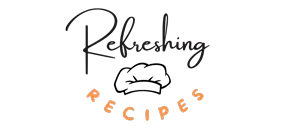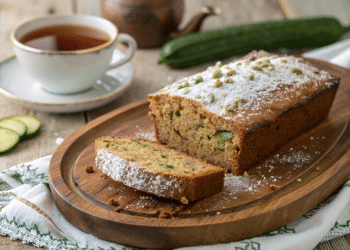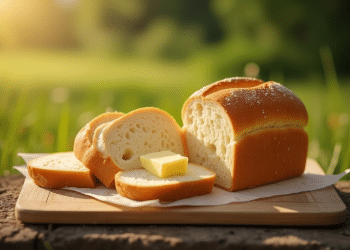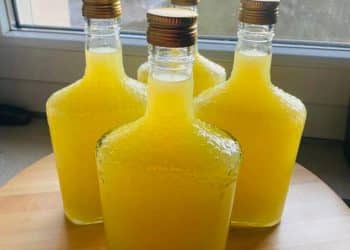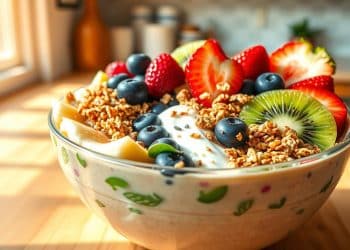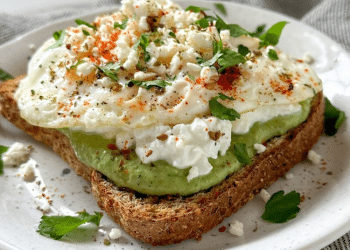What is a Ginger Bug?
A ginger bug recipe is a natural fermenting culture made from fresh ginger root, sugar, and water. Think of it as a wild soda starter that captures the beneficial yeasts and bacteria from the air, and the ginger itself to create a bubbly, probiotic-rich base for homemade sodas.
The Magic of Wild Fermentation
Unlike commercial yeast, ginger bugs rely on wild fermentation. That means you don’t add a lab-grown yeast packet. Instead, the microbes already living on the ginger and in your environment do the work. It’s like capturing the wild soul of nature in a jar!
Why Use a Ginger Bug Instead of Commercial Yeast?
Flavor, health, and tradition. A ginger bug gives your sodas a more complex flavor and adds gut-friendly bacteria that commercial soda can’t compete with. It also keeps your drinks truly homemade and alive.
Benefits of Ginger Bug Sodas
Natural Probiotics
Sodas made from a ginger bug are naturally fermented, meaning they contain live cultures that support digestion and immune health—just like yogurt or kefir.
Healthier Than Store-Bought Sodas
You control the ingredients, so no high-fructose corn syrup, artificial flavors, or weird chemicals. Just ginger, sugar, water, and whatever fruits or herbs you love.
Customizable Flavors
From lemon-lavender to strawberry-basil, you can craft endless flavor combos. Your taste buds are the limit.
Ingredients and Tools Needed
Simple Ingredients, Powerful Results
To make a ginger bug, you only need:
- Fresh ginger root (organic is best)
- White sugar (you can experiment later)
- Filtered or dechlorinated water
Must-Have Tools for a Successful Ferment
- A clean glass jar (quart-sized is great)
- A wooden or plastic spoon (avoid metal)
- A breathable cover (like a coffee filter or cloth)
- A rubber band to secure the cover
Step-by-Step Guide to Making a Ginger Bug
Day 1: Kickstarting the Culture
- Finely chop 1 tablespoon of ginger root (skin on is fine).
- Add it to your jar with 1 tablespoon of sugar.
- Pour in 1 cup of filtered water.
- Stir well and cover.
Set your jar in a warm, dark spot (around 70–80°F/21–27°C is ideal).
Days 2–5: Daily Feedings and Observations
Each day, add:
- 1 tablespoon chopped ginger
- 1 tablespoon sugar
Stir thoroughly and recover. After a few days, you should see bubbles forming and smell a slightly yeasty, sweet scent.
Signs Your Ginger Bug is Alive and Well
- Small bubbles rising to the top
- A pleasant, gingery aroma
- Light fizz when you stir
If you see mold, toss it and start over (but don’t panic—it’s rare if you’re clean).
How to Use Your Ginger Bug
Brewing Homemade Sodas
Once your bug is active (around Day 5), you can use ¼ to ½ cup of it to inoculate about 1 quart (liter) of sweetened, flavored liquid (like herbal tea or fruit juice). Bottle it tightly and let it ferment at room temperature for 2–3 days to carbonate.
Flavoring Ideas for Your Sodas
- Ginger-lemon-honey
- Hibiscus and raspberry
- Blueberry-lavender
- Orange-vanilla “cream soda”
Get creative!
Carbonation Tips and Tricks
Always burp bottles daily to release pressure and avoid explosions. Use flip-top glass bottles for the best fizz.
Ginger Bug Maintenance
Feeding Your Bug Regularly
If you’re using it regularly, keep feeding it daily like before. If not, store it in the fridge and feed once a week.
How to Pause or Store a Ginger Bug
Going on vacation? No problem. Pop it in the fridge, and it’ll chill (literally) for weeks. Just revive it with a couple of feedings when you’re back.
Troubleshooting Common Issues
Mold vs Yeast – What’s Normal?
White foam = good yeast. Fuzzy, blue/green/pink stuff = mold. If it’s moldy, discard and sanitize everything.
My Ginger Bug Isn’t Bubbling – Now What?
Double-check:
- Water (no chlorine)
- Temperature (not too cold)
- Ginger (organic preferred)
Sometimes it just needs more time or a bit more sugar.
Preventing Off-Smells and Contamination
Use clean tools, cover it properly, and don’t let fruit flies get in. They love fermenting!
Safety Tips for Fermentation
Cleanliness is Key
Always sanitize your jars and utensils. A dirty spoon can ruin the whole thing.
When to Toss a Batch
If it smells rotten, has mold, or you’re just unsure—it’s safer to throw it out. Your health > your ferment.
Advanced Tips for Ginger Bug Masters
Using Alternative Sugars
Once your bug is thriving, try feeding it:
- Coconut sugar
- Raw cane sugar
- Molasses (sparingly)
It adds depth to flavor—but keep the original white sugar at the start for best results.
Using Other Roots (Like Turmeric or Galangal)
Swap or mix ginger with turmeric or galangal for a spicy twist. Great for flavor and added anti-inflammatory benefits.
Ginger Bug vs Other Starters
Ginger Bug vs Kombucha SCOBY
Kombucha uses a SCOBY and takes weeks to ferment. Ginger bug is faster, fizzier, and more soda-like.
Ginger Bug vs Kefir Grains
Water kefir is similar but uses grains you have to maintain. Ginger bugs are more low-maintenance and wild.
Conclusion
Making a ginger bug is like having a pet in your kitchen—one that rewards you with fizzy, flavorful, and gut-friendly soda. It’s simple, sustainable, and surprisingly fun. With just ginger, sugar, and water, you can open a whole new world of natural fermentation right at home.
So go grab some fresh ginger and start your bug today—you’ll never look at soda the same way again.
FAQs
1. Can I make a ginger bug with dried ginger?
Fresh ginger is ideal because it contains more live microbes. Dried might work, but results vary.
2. How long does a ginger bug last?
Indefinitely, if properly maintained. Some folks keep theirs alive for years!
3. Why does my ginger bug smell like cheese?
That’s a sign of contamination. Toss it, clean your jar, and start over.
4. Can I use honey instead of sugar?
Honey has antibacterial properties that might inhibit fermentation. Stick with sugar until the bug is strong.
5. How do I know when my soda is ready?
Taste it! When it’s fizzy and flavorful, chill it in the fridge to stop fermentation and enjoy.
You’ll Also Like:
Japanese Mounjaro Recipe for Weight Loss 2025
Cheese and Bacon Cob Loaf Recipe Guide
